When it comes to Brussels, Belgium, this quintessential capital city is renowned for being full of Art Deco taverns, unique Flemish art, towering Gothic cathedrals and quaint guild houses and its 19th-century shopping arcade. When we talk about vacationing in the capital city of Belgium, Brussels; immediately one name “La Grand Place” comes in our mind. The prominence of this historic site is proclaimed in Europe as well as across the globe.
The influence of La Grand Place is too much in Brussel and houses many attractive buildings nearby. A long history is affiliated with this UNESCO World Heritage Site.
So let’s pen down more about La Grand Place in this blog.
La Grand Place – The Epitome of Ancient Architecture
The La Grand Place is the city of Brussels’ influential and iconic square and is regarded as one of the world’s most beautiful locations. This square is well-known around the world for its market, beautiful artistic wealth and historic architecture thus it is also known as Grote Markt. It is a collection of public and private structures, most of which belongs to the late 17th century. The beautiful architecture is a vivid representation of the social and cultural life in this vital political and commercial centre.
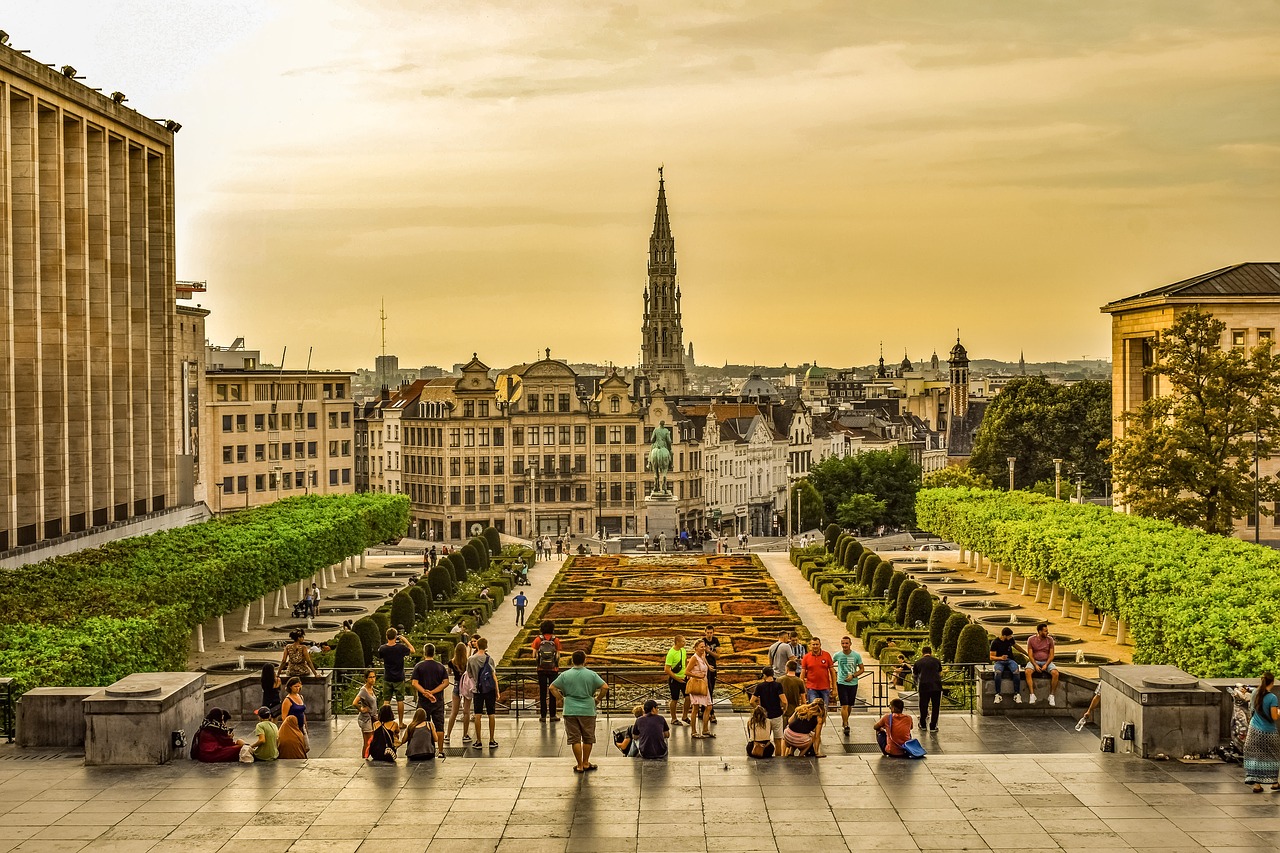
This important tourist destination of Brussels drawing the attention of people for a long time. And thus this beautiful square in Europe has been got a mention in the UNESCO World Heritage Site in 1998.
When was Brussel’s La Grand Place Built?
The buildings that surround Grand Place were constructed at various dates, but the majority of the public buildings date from the 15th century, while the other buildings are dating between the 17th century to the 18th-century which were mostly established in Baroque architecture. The Town Hall in Grand Place is the most prominent structure. It was constructed between 1401 and 1455 and is the only remaining mediaeval structure in the square.
History Associated With La Grand Place
The history of La Grand-Place dates back to the reign of Duke Charles of Lower Lorraine in the 10th century. He built a fort on Saint-Gery Island until the 11th century when an open-air marketplace was built near the fort. From then on, the market grew and evolved into the heart of Brussels’ commercial development.
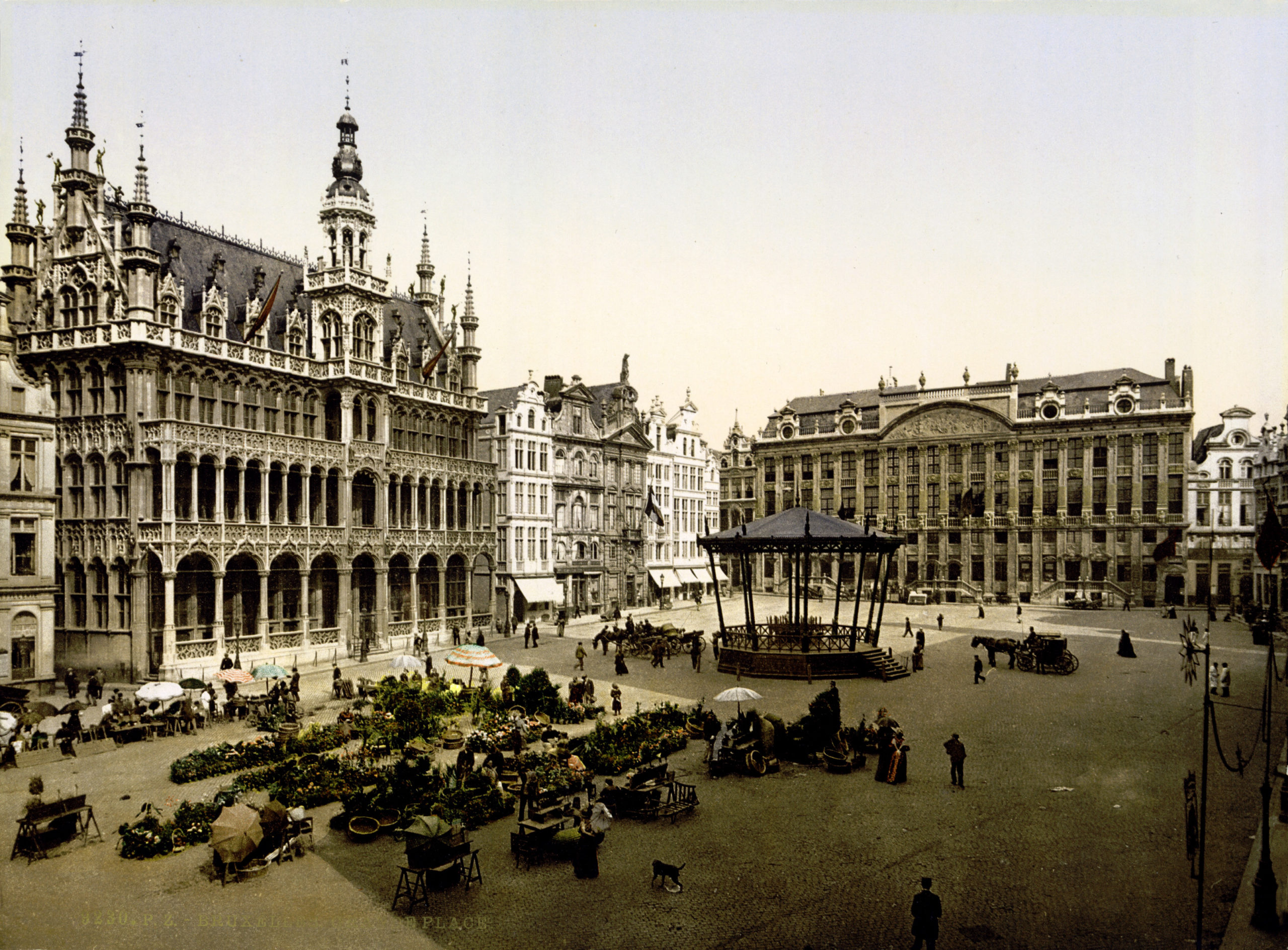
Indoor markets were built on the outskirts of this open-air marketplace until the 13th century. Grand Place was improved in the fourteenth century. Due to a lack of funds, the Duke was forced to hand over control of the Grand Place to the local authorities. The City Hall was built in the mid-15th century and served as the seat of the city council.
Attractions in the Vicinity of La Grand Place
The lavish Baroque guildhalls of the ancient Brussels Guilds, as well as the city’s Classy Town Hall and the neo-Gothic King’s House or Breadhouse structure, which holds the Brussels City Museum, surround the La Grand Place. Around the beginning of the 13th century, three indoor marketplaces were erected on the northern border of Grand Place. The Grand Place was flanked by wooden and stone structures.
Museum of the City of Brussels
The King House is also known as Maison du Roi. It was completed in 1536 and remodelled in 1873. The Duke of Brabant, or Charles V, was the monarch of the Spanish Empire and the Holy Roman Empire at the time.
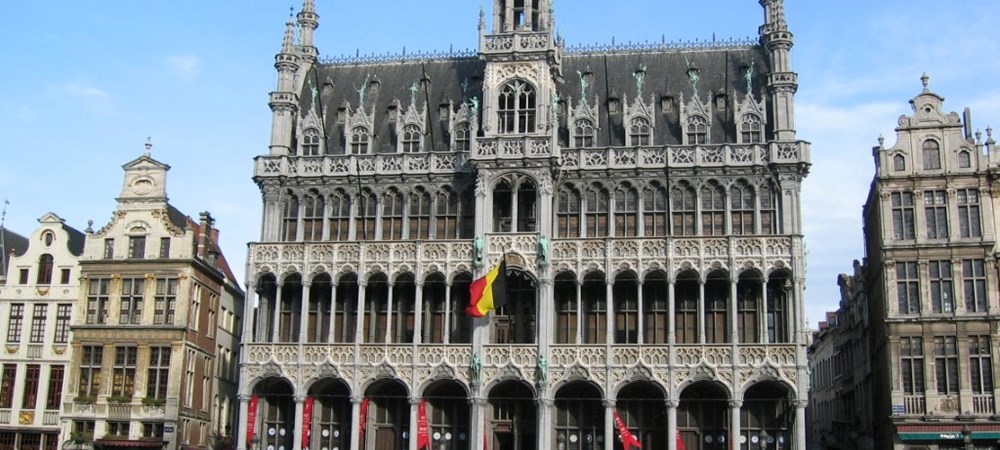
It now houses the City of Brussels Museum, which exhibits paintings from the sixteenth century, tapestries and miniature suits from the Mannekin Pis’ wardrobe. The Duke’s building is now the Museum of the City of Brussels. This museum houses interesting displays inside it revealing the history and topography of Brussels and Belgium. It gives you the chance to acquire some unusual facts about this historic city.
- Tourists can visit the museum from Tuesday to Sunday from 10:00 am to 5:00 pm.
- Avoid visiting on these specific dates – January 1st, May 1st, November 1st, November 11th, December 25th. As the Museum is closed on these dates too.
- Fees – The museum’s admission ticket is €8. It costs €6 for seniors and €4 for students. For those under the age of 18, admission is free.
The Town Hall – La Grand Place
The Town Hall is the most important site at Grand Place, and it’s impossible to ignore it. It stands about 100 metres tall, with a 5-metre tall monument of Saint Michael defeating a monster atop. It’s a Gothic structure that dates back to the Middle Ages. The historic town hall’s façade is adorned with statues of monks, mythological figures, and lords. Unfortunately, tourists cannot visit directly.
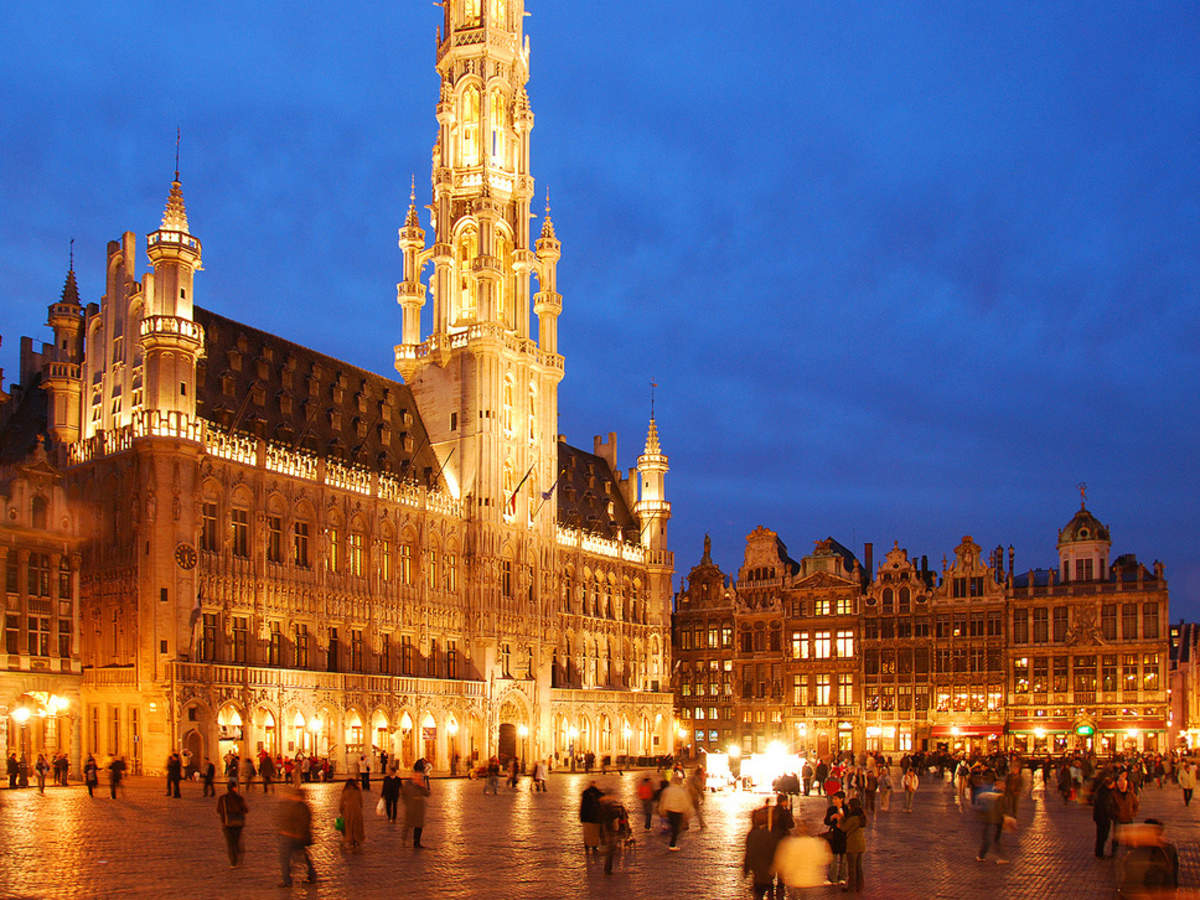
You have to take guided tours which are available on certain days in several languages.
- The following times are available for tours of the Town Hall: Every Wednesday at 1:00 p.m. in French, 2:00 p.m. in English, and 3:00 p.m. in Dutch.
Also Read: Brasilia – A WHS City In Brazil With Modernist architecture
Guildhalls of the La Grand Place
In Brussels, Belgium, a stretch of guild houses and halls runs down one end of the Grand Place. These structures have intricately been constructed in Gothic, Baroque and Renaissance architectural facades.
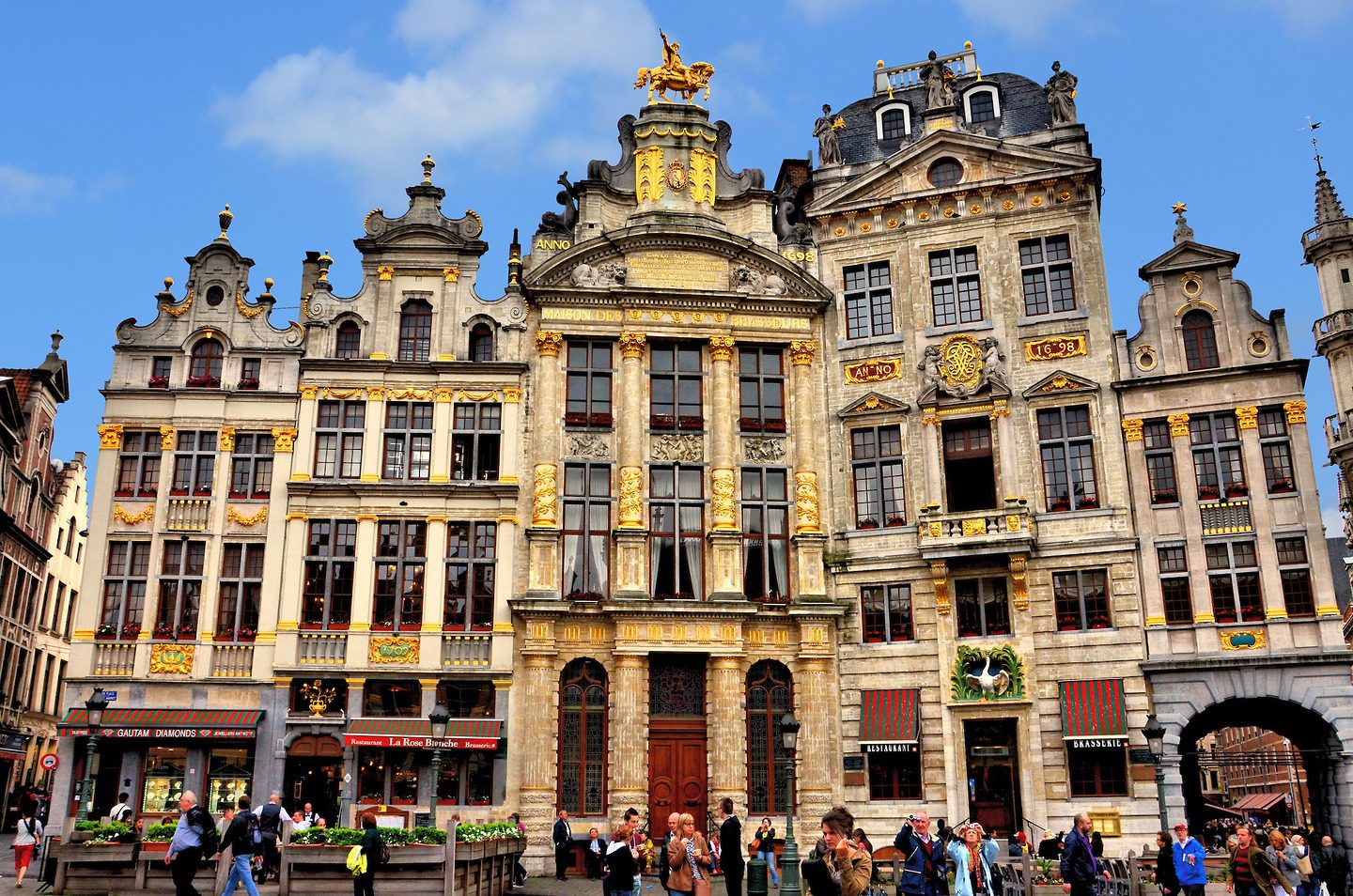
These guildhalls have earned this landmark the reputation of being one of Europe’s most gorgeous and well-preserved mediaeval squares.
A neo-classical ensemble of seven residences is hidden under one huge façade at the Maison des Ducs de Brabant. The house where Victor Hugo lived during his exile in Belgium in 1852 is known as Le Pigeon.
Flower Carpet Event at La Grand Place
La Grand Place is also the location of Belgium’s bi-annual Flower Carpet event. The Grand Place hosts a gigantic flower carpet every two years in August, which is set up for a few days in the central plaza.
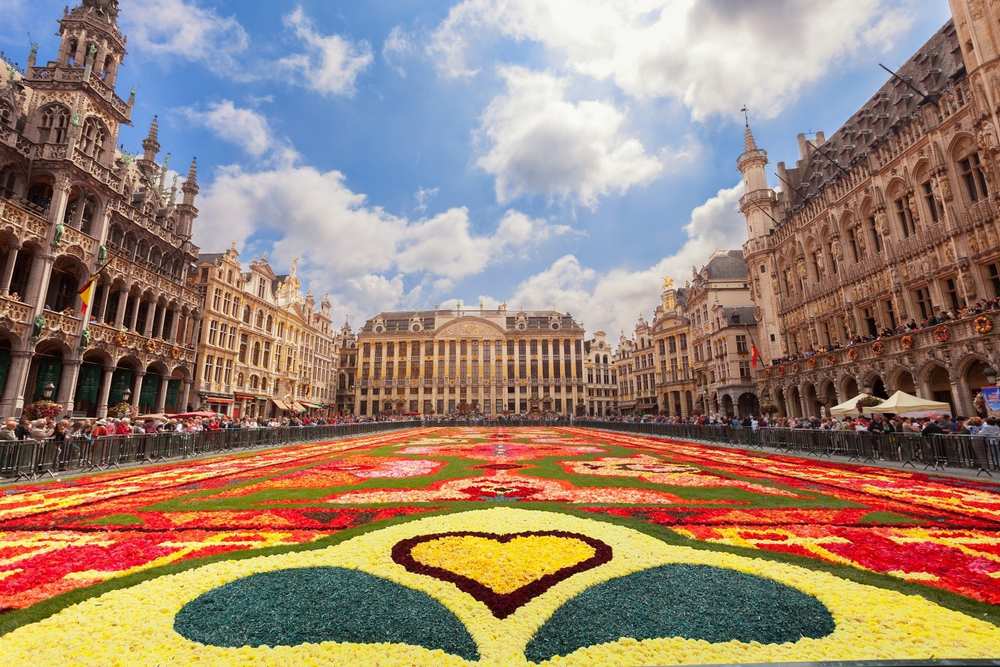
The inaugural Flower Carpet was held in 1971 and because of its popularity, the tradition has been maintained. A vibrant display of over a million begonias has been set up. This event, in reality, draws a large number of tourists to the square.
How to Visit La Grand Place of Brussels
The Grand Place is easily accessible to visitors and is located in the centre of the historic area. It is within walking distance of major historic sights in Brussel. The Central station is only a few minutes away from the city, you can walk from the station to reach the place. At some point during the day, almost every tourist and the tour runs through the Grand Place. If you are interested in public transport these are the options available.
- By bus: The Plattesteen bus station is only a few minutes away. Bourse, lines 48 and 95; Gare Centrale, lines 38, 65, 71 and 86.
- By Tram: Bourse light rail station is served by trams 3, 4, 31, 32 and 33.
- By metro head up straight to lines 3 and 4
- You can also hire a car/taxi for reaching the square.
Concluding here but, I must say the La Grand Place is the most well-known and photographed location in the entire Brussel City. Architecturally, it is one of Europe’s most attractive squares, with dozens of famous structures. So you must include La Grand place in your Brussels travel bucket list.
Also Read: A Glimpse Of Old Bridge In the City Of Mostar – UNESCO Site

